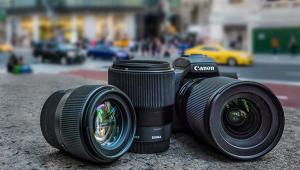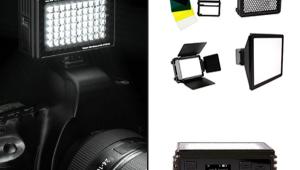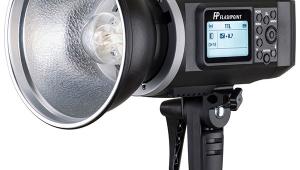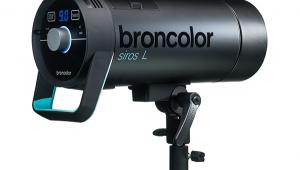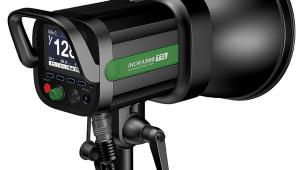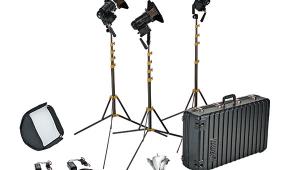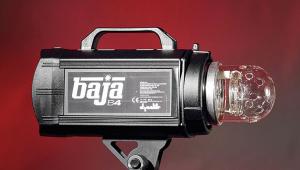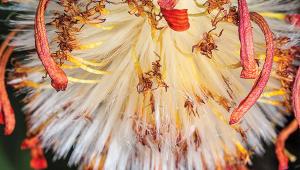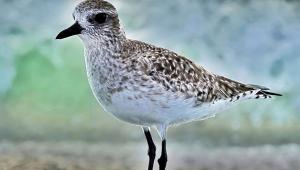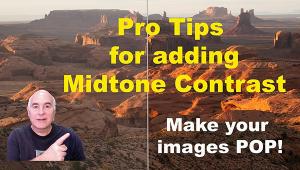Westcott Parabolic Umbrellas: When It Comes To Lighting Modifiers, Size Does Matter
Photographic umbrellas are the simplest and most inexpensive form of light modifier available and that makes them the most popular, too. Photographic umbrellas look and act just like rain umbrellas except they’re reflective and light is bounced into or shot through them, creating a big, soft light source that’s aimed at the subject. And size does matter. As photographers we live by a few important lighting rules: the closer and larger a light source is to a subject, the softer the lighting effect will be. Conversely, the smaller and further away a light source is from the subject, the harder the lighting becomes. That old lighting rule that “size matters” is important here because a large umbrella is going to produce broader, softer light for your portraits.

Parabolics For The People
Westcott has been making all kinds of umbrellas for a long time and recently introduced a series of three parabolic umbrellas that are available in White Diffusion, Silver, and White/Black finishes. Each umbrella measures 7 feet and weighs only 2.5 lbs. These large umbrellas are constructed using 16 fiberglass ribs that provide more strength and durability than the typical steel or aluminum frames that are used in most photographic umbrellas. The umbrella’s center shaft is double the thickness of typical shafts and has a standard 7mm tapered tip that should fit most lighting equipment, including monolights and power pack/head systems. It easily fit into the Dynalite (www.dynalite.com) heads and Flashpoint (www.adorama.com) monolights that I used during this test.

All Photos © Joe Farace
When used in shoot-through mode, the 7-foot White Diffusion Parabolic Umbrella (#4632) is ideal for diffusing large areas of harsh light. For this umbrella, Westcott uses a one-stop fabric that under “normal shooting conditions” may produce light loss probably greater than one stop. On the other hand, the 7-foot Silver Parabolic Umbrella (#4633) should produce maximum light reflection when used in traditional bounce mode. The 7-foot White/Black Parabolic Umbrella (#4634), which is the model I tested, offers a white interior that softens and broadens any light bounced into it and has a solid black backing to eliminate light spilling out the back. Each umbrella is delivered with a nicely made nylon carrying case with a shoulder strap, making it ideal for travel, although it’s long enough so that it would not fit into the trunk (boot for you purists) of my MINI Cooper without folding the rear seat down. All three umbrellas have an introductory rate of $129.90 with an expected street price of $99.90 and that’s how I’ve seen them advertised at the time of this writing.


In The Studio
My new in-home studio is not very large but has some virtues my old one lacked, such as finished white walls and nearly 9-foot ceilings. That’s high enough so I can stuff a monolight with a 7-foot Westcott parabolic umbrella in it and place it at an elevation giving me control over where to aim the light. Lower ceilings would be a challenge; higher ceilings offer more lighting control and flexibility. The first test shoot in my new studio was with Heather who I photographed using two Flashpoint monolights: the main light holding a 7-foot White/Black Parabolic Umbrella was a Flashpoint 620M at camera left with a Flashpoint 320 wearing a snoot also at camera left. What this shoot told me—and you—was that you can use Westcott’s parabolics to create moody lighting or soft, broad lighting with specular highlights depending on where you point it or how you feather it.


Along with the flash tube, the color of the umbrella fabric has a bearing on the color temperature of the output and the white fabric used in Westcott’s 7-foot White/Black Parabolic Umbrella is as neutral as you could hope for. All of my shots were made with the cameras set in Auto White Balance mode and needed no color correction. Some photographers like to shoot flash images using the Flash color preset on their cameras but I have found the actual color of this setting varies by camera brand and most of the time it’s too warm for my taste. The key words here are “my taste” and if you’re happy with the color balance of your camera’s Flash preset the Westcott parabolic won’t add any of its own color to your photographs.
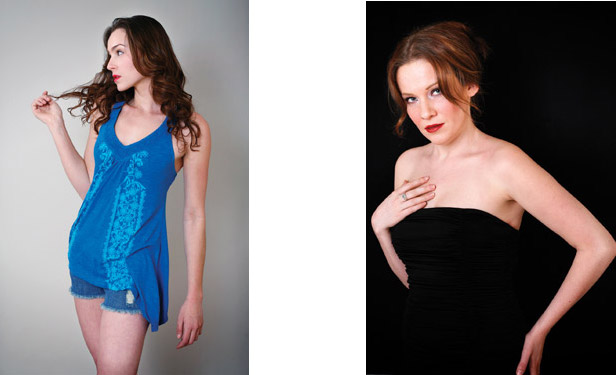
There were other advantages to Westcott’s parabolic design, too. When Barry Staver photographed me for a new headshot, some of the test shots were made while I was wearing glasses and the broad lighting produced by the Westcott parabolic umbrella did not produce any of the dreaded glass-glare problems, something that always makes for time-consuming retouching later. Because of the volatile weather this spring, all of my test shots were made indoors, but here’s a tip for shooting with a large umbrella, such as Westcott’s parabolics, outdoors: any kind of breeze can quickly turn a large photographic umbrella into an identified flying object. I suggest that you place not one but two heavy shot bags on your light stand’s legs to prevent takeoff because I guarantee you won’t like the landing.
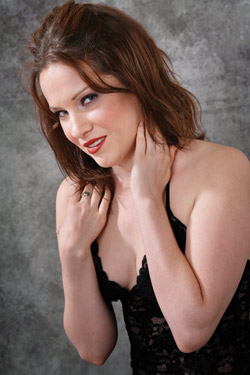
For my most recent shoot with the Westcott parabolic, I tried to keep the lighting simple. The main light was a Flashpoint 620M; I used a single Flashpoint 320 as an occasional hair or background light. At one point, I switched to using one of Westcott’s Black Scrim Jims as a background with only a single light creating a delightfully low-key look, affirming the parabolic’s versatility. Two Westcott parabolics used together, a Diffusion model in shoot-through mode and a White/Black model in bounce mode as fill, would be an economical studio lighting solution when mounted on inexpensive monolights.

Westcott’s parabolic umbrellas are the perfect one-light solution, making them ideal for the photographer on the go. Like all umbrellas they have ease and simplicity of set up so you can get acceptable portrait lighting without knowing the difference between a lighting ratio and a financial ratio. And because you can get by with just a single light source and the umbrellas themselves are not all that expensive, it’s a win-win solution for affordable portrait lighting.

For more information, contact the F.J. Westcott Company at: www.fjwestcott.com.
- Log in or register to post comments

